Abstract
A 23-year-old man presented with an extensive nasopharyngeal angiofibroma. The inferolateral trunk, a branch of the internal carotid artery, was a major source of arterial supply to the tumor. Therefore, surgery had to be done in two stages. The first stage started with an extracranial-intracranial bypass by means of the excimer laser-assisted procedure. This technique precludes temporary cross-clamping of intracranial arteries. This bypass procedure was followed by occlusion of the internal carotid artery. Then, in the second stage, the tumor was safely removed.
Full text
PDF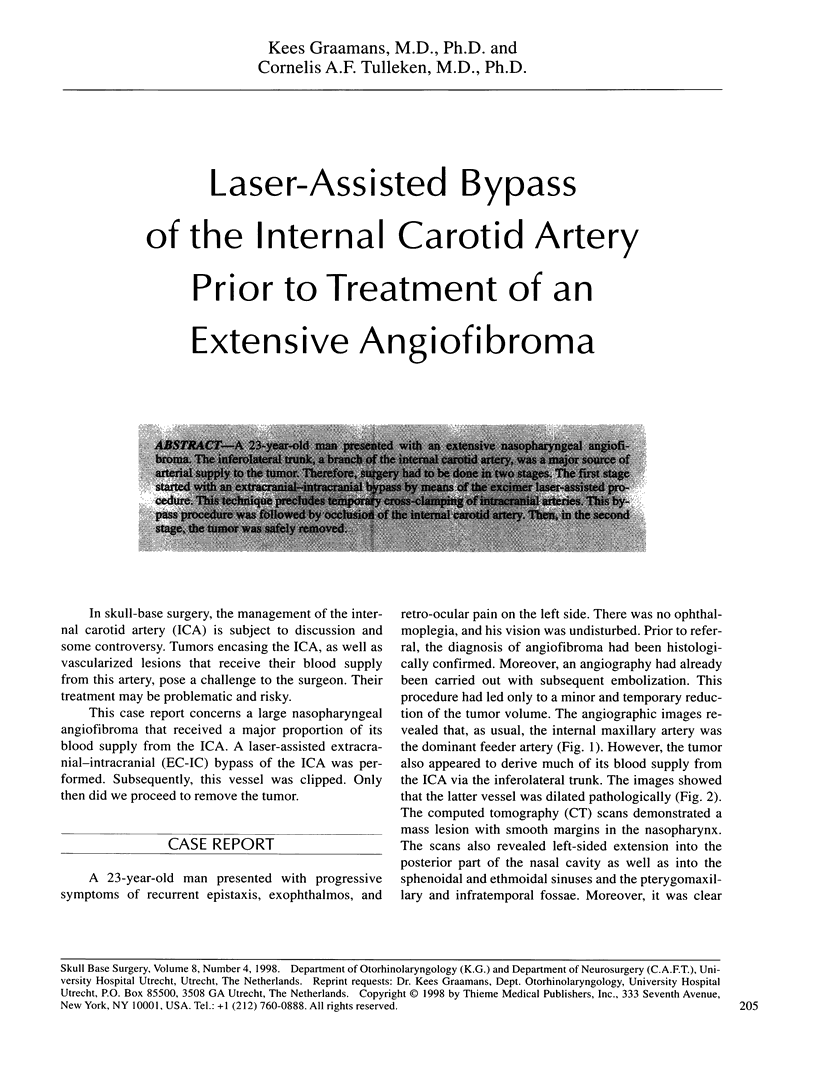
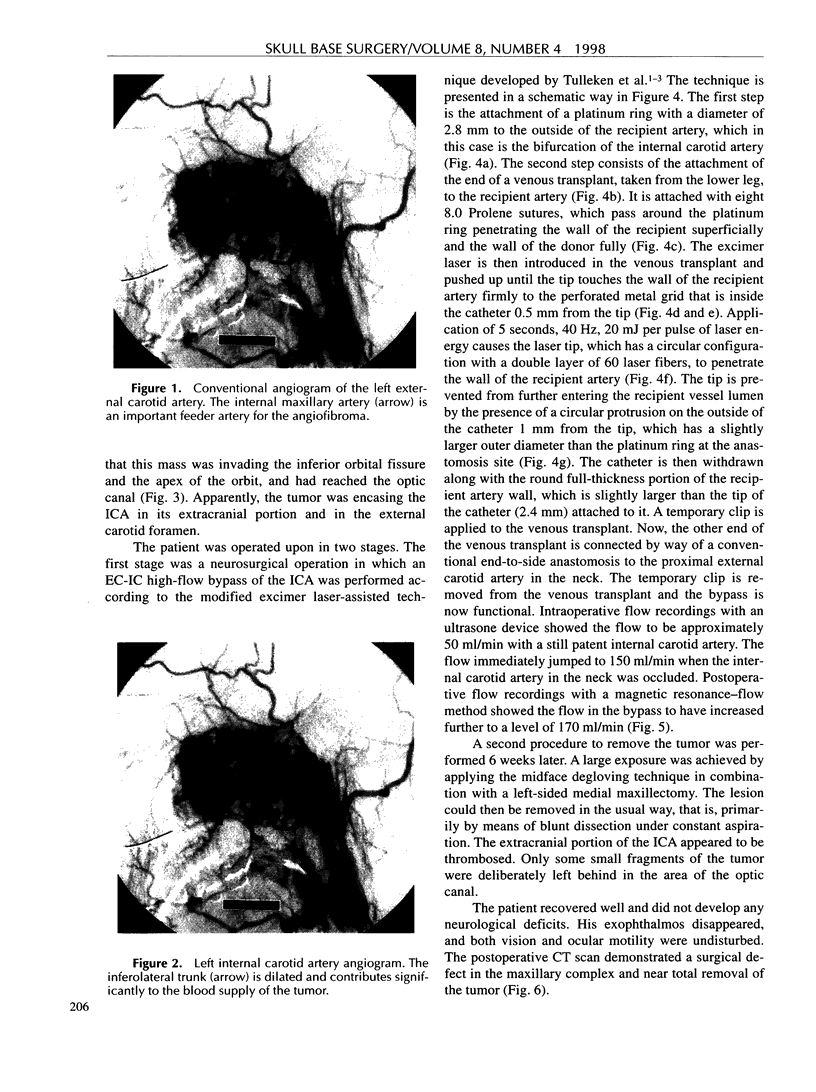
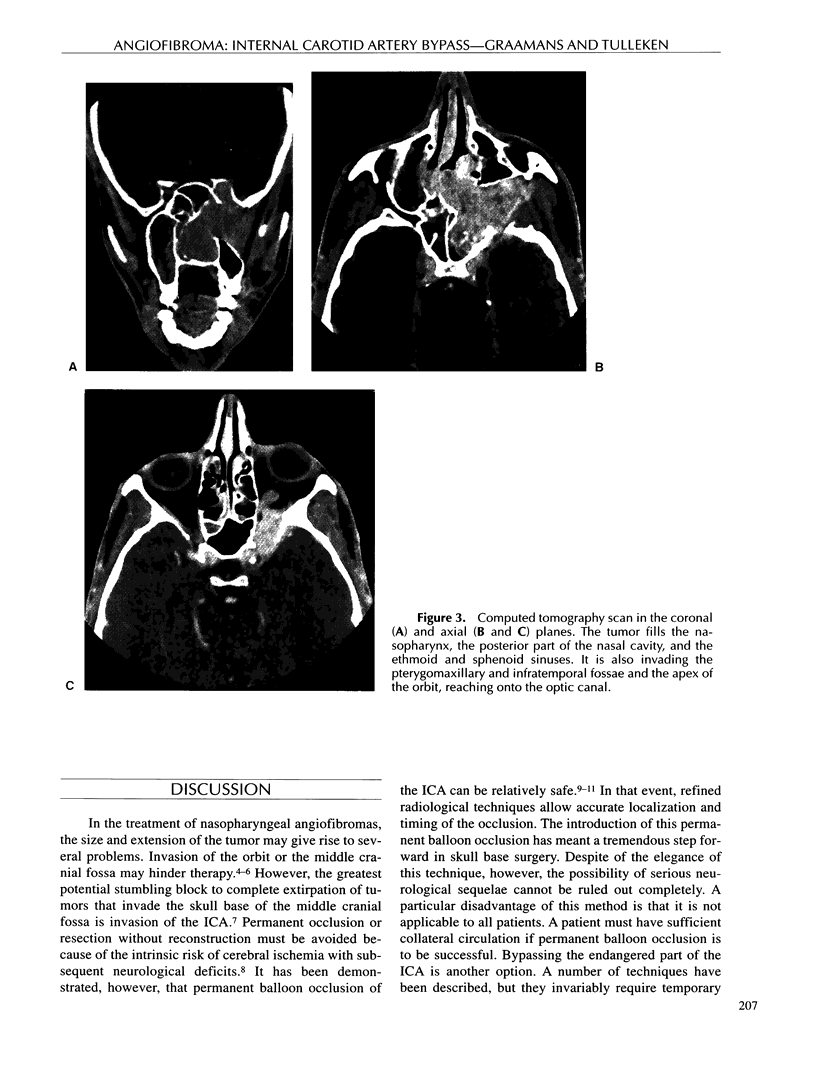
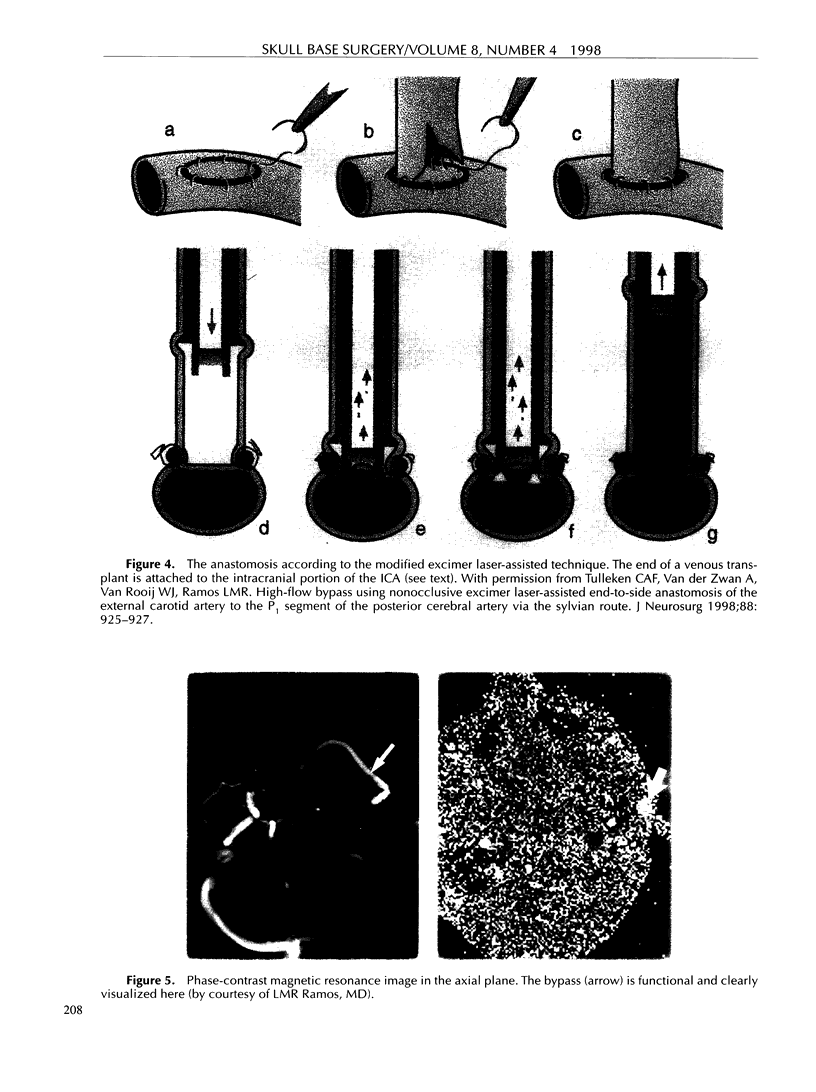

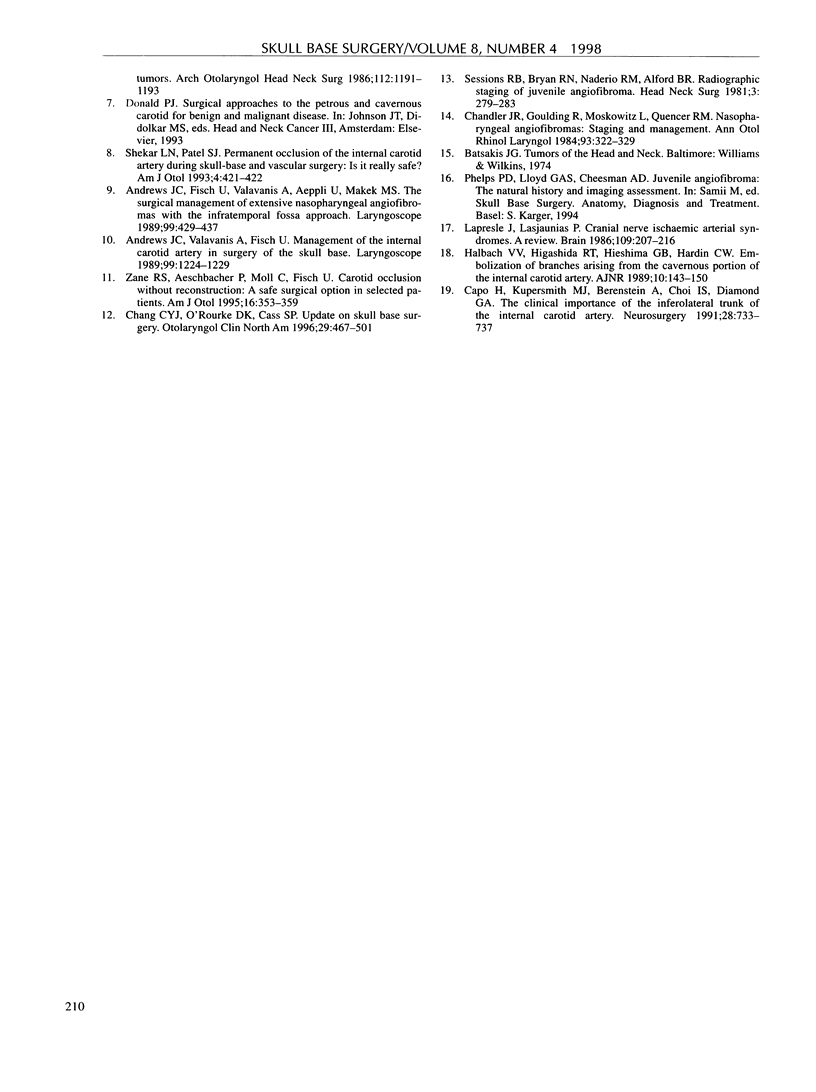
Images in this article
Selected References
These references are in PubMed. This may not be the complete list of references from this article.
- Andrews J. C., Fisch U., Valavanis A., Aeppli U., Makek M. S. The surgical management of extensive nasopharyngeal angiofibromas with the infratemporal fossa approach. Laryngoscope. 1989 Apr;99(4):429–437. doi: 10.1288/00005537-198904000-00013. [DOI] [PubMed] [Google Scholar]
- Andrews J. C., Valavanis A., Fisch U. Management of the internal carotid artery in surgery of the skull base. Laryngoscope. 1989 Dec;99(12):1224–1229. doi: 10.1288/00005537-198912000-00003. [DOI] [PubMed] [Google Scholar]
- Bremer J. W., Neel H. B., 3rd, DeSanto L. W., Jones G. C. Angiofibroma: treatment trends in 150 patients during 40 years. Laryngoscope. 1986 Dec;96(12):1321–1329. doi: 10.1288/00005537-198612000-00001. [DOI] [PubMed] [Google Scholar]
- Capo H., Kupersmith M. J., Berenstein A., Choi I. S., Diamond G. A. The clinical importance of the inferolateral trunk of the internal carotid artery. Neurosurgery. 1991 May;28(5):733–738. doi: 10.1097/00006123-199105000-00018. [DOI] [PubMed] [Google Scholar]
- Chandler J. R., Goulding R., Moskowitz L., Quencer R. M. Nasopharyngeal angiofibromas: staging and management. Ann Otol Rhinol Laryngol. 1984 Jul-Aug;93(4 Pt 1):322–329. doi: 10.1177/000348948409300408. [DOI] [PubMed] [Google Scholar]
- Chang C. Y., O'Rourke D. K., Cass S. P. Update on skull base surgery. Otolaryngol Clin North Am. 1996 Jun;29(3):467–501. [PubMed] [Google Scholar]
- Cummings B. J. Relative risk factors in the treatment of juvenile nasopharyngeal angiofibroma. Head Neck Surg. 1980 Sep-Oct;3(1):21–26. doi: 10.1002/hed.2890030106. [DOI] [PubMed] [Google Scholar]
- Halbach V. V., Higashida R. T., Hieshima G. B., Hardin C. W. Embolization of branches arising from the cavernous portion of the internal carotid artery. AJNR Am J Neuroradiol. 1989 Jan-Feb;10(1):143–150. [PMC free article] [PubMed] [Google Scholar]
- Jones G. C., DeSanto L. W., Bremer J. W., Neel H. B., 3rd Juvenile angiofibromas. Behavior and treatment of extensive and residual tumors. Arch Otolaryngol Head Neck Surg. 1986 Nov;112(11):1191–1193. doi: 10.1001/archotol.1986.03780110067009. [DOI] [PubMed] [Google Scholar]
- Lapresle J., Lasjaunias P. Cranial nerve ischaemic arterial syndromes. A review. Brain. 1986 Feb;109(Pt 1):207–216. doi: 10.1093/brain/109.1.207. [DOI] [PubMed] [Google Scholar]
- Sekhar L. N., Patel S. J. Permanent occlusion of the internal carotid artery during skull-base and vascular surgery: is it really safe? Am J Otol. 1993 Sep;14(5):421–422. doi: 10.1097/00129492-199309000-00001. [DOI] [PubMed] [Google Scholar]
- Sessions R. B., Bryan R. N., Naclerio R. M., Alford B. R. Radiographic staging of juvenile angiofibroma. Head Neck Surg. 1981 Mar-Apr;3(4):279–283. doi: 10.1002/hed.2890030404. [DOI] [PubMed] [Google Scholar]
- Tulleken C. A., Verdaasdonk R. M., Beck R. J., Mali W. P. The modified excimer laser-assisted high-flow bypass operation. Surg Neurol. 1996 Nov;46(5):424–429. doi: 10.1016/s0090-3019(96)00096-1. [DOI] [PubMed] [Google Scholar]
- Tulleken C. A., Verdaasdonk R. M., Berendsen W., Mali W. P. Use of the excimer laser in high-flow bypass surgery of the brain. J Neurosurg. 1993 Mar;78(3):477–480. doi: 10.3171/jns.1993.78.3.0477. [DOI] [PubMed] [Google Scholar]
- Tulleken C. A., Verdaasdonk R. M. First clinical experience with Excimer assisted high flow bypass surgery of the brain. Acta Neurochir (Wien) 1995;134(1-2):66–70. doi: 10.1007/BF01428506. [DOI] [PubMed] [Google Scholar]
- Zane R. S., Aeschbacher P., Moll C., Fisch U. Carotid occlusion without reconstruction: a safe surgical option in selected patients. Am J Otol. 1995 May;16(3):353–359. [PubMed] [Google Scholar]









